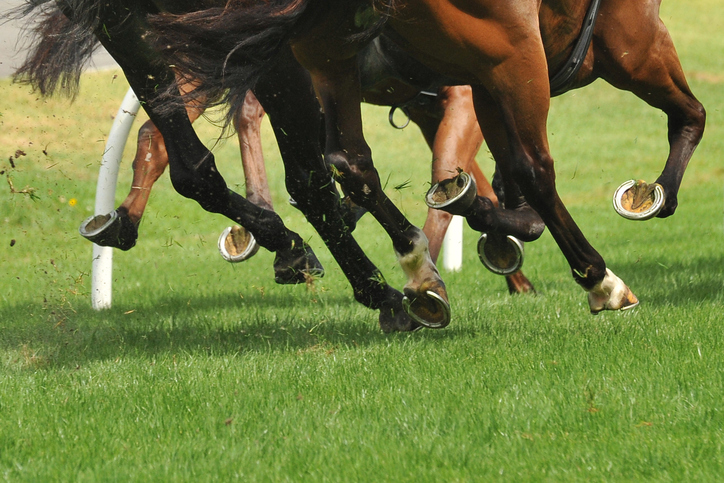In-play betting, also known as live betting, has transformed the way bettors engage with horse racing. Unlike traditional pre-race wagers, in-play betting allows users to place bets while the race is happening, taking advantage of real-time odds fluctuations, momentum shifts, and race conditions. This dynamic betting format offers exciting opportunities for those who can analyze pace, jockey positioning, and horse stamina to make smarter betting decisions. For cricket fans, cricket betting with real-time stats provides an edge by offering live data to enhance wagering accuracy.
Understanding how to interpret live odds movements, track bias, and rider tactics is crucial for gaining an edge in in-play betting. Unlike fixed-odds betting, where prices are locked in before the race starts, in-play odds constantly change based on a horse’s performance, position, and momentum. Early in the race, horses that break well and take the lead often see their odds shorten, while those that start slowly or get boxed in experience drifted odds. However, experienced bettors know that early speed doesn’t always translate to victory, making it essential to analyze more than just the race’s opening moments.
As the race progresses, odds fluctuate based on pace and stamina indicators. If a horse is being ridden aggressively too early, its price may shorten initially, but a sharp bettor will recognize that it could fade later. Conversely, a horse positioned well and traveling smoothly without excessive urging may represent value if its odds remain longer than expected.
Several factors influence how odds move during a live race. Track conditions play a significant role, as some horses perform better on soft ground while others excel on firm surfaces. Jockey decisions also impact odds—an experienced jockey conserving energy early may put their horse in a strong position for a late charge. Additionally, bettors must watch for race tempo, as a fast early pace can burn out front-runners, benefiting horses running from behind.
One of the most effective in-play betting strategies is recognizing when to bet on a strong finisher. Many bettors overreact to early speed, backing front-runners who may fade in the final furlongs. However, sharp bettors look for horses that are positioned well behind the leaders but are traveling comfortably.
Horses known for late bursts of speed or those being ridden patiently by their jockey can present excellent betting value. If an early leader is being pushed aggressively, it often signals that the jockey lacks confidence in the horse’s stamina, creating an opportunity to bet against them as their odds remain falsely low.
Sometimes, a horse may be performing well but remains at high odds due to lack of attention from public bettors. This often happens when:
- A horse is making steady progress but has not yet challenged for the lead.
- The horse’s previous form does not suggest a win, but its current run shows strong momentum.
- The market has focused too heavily on a favorite, leaving better value on another competitor.
By identifying overlooked contenders, bettors can secure better odds before the market adjusts to their performance.
Using Real-Time Data and Track Bias for Smarter Bets
A horse’s body language and running action can indicate whether it has the stamina to sustain its pace. Bettors should watch for:
- Horses moving smoothly with minimal urging from the jockey, indicating reserved energy.
- Signs of fatigue, such as head bobbing or a jockey using the whip excessively early.
- Horses responding positively to mild urging, showing they have another gear left for a strong finish.
By tracking which horses still have energy to accelerate, bettors can make profitable late-race wagers on horses poised for a strong finish.
Certain racecourses favor specific running styles based on track conditions. On some tracks, front-runners perform well, while others heavily favor horses that make late moves. Recognizing track bias in real-time can help bettors adjust their betting strategy during the race. For those who enjoy dynamic wagering, bet live on cricket matches and take advantage of shifting odds as the action unfolds.
For example, if a track has produced multiple winning horses from off the pace, betting against an early leader becomes more appealing. Conversely, if horses in front are maintaining their advantage, bettors may want to back a well-placed runner near the lead.
One of the challenges in live betting is knowing when to place a wager for maximum value. If odds drop too quickly, bettors may lose out on a better price. The key is to anticipate a shift before the market reacts, ensuring that bets are placed when the odds still offer profitable returns.
For example, a horse that looks poised to accelerate but remains at a high price is an ideal betting opportunity. Bettors must avoid chasing already shortened odds, as value diminishes once the market corrects itself.
In-play betting is fast-paced, making it easy to place too many bets in the heat of the moment. Smart bettors set pre-determined bankroll limits and focus on only the best-value opportunities. Betting impulsively on every odds shift can quickly lead to losses, rather than strategic gains.



 Bitcoin
Bitcoin  Ethereum
Ethereum  Tether
Tether  XRP
XRP  USDC
USDC  Wrapped SOL
Wrapped SOL  TRON
TRON  Lido Staked Ether
Lido Staked Ether  Cardano
Cardano  Avalanche
Avalanche  Toncoin
Toncoin